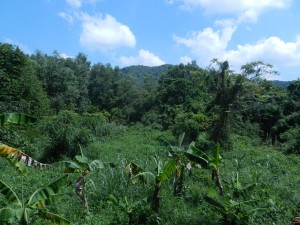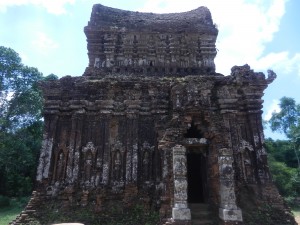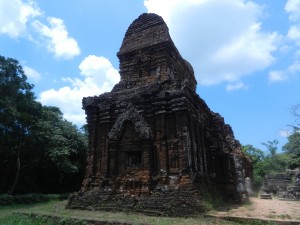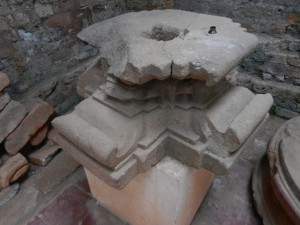The Cham didn’t build anything colossal. No Angkor Wat, no Great Wall, no Forbidden City, no Gothic cathedral. But many people find their art just as appealing.
I do too. What inspired them to make some of Asia’s best kept secrets?
We can look at a few facts about their lives and natural landscape.
1. Champa wasn’t one empire. Several kings usually divided the area into their own territories.
2. These states weren’t like Angkor or the Red River. They didn’t have extensive flat lands for growing rice. The Cham were excellent farmers, and they developed a crop that matured within 100 days. But they didn’t have the land to grow huge surpluses, like Angkor did. Much of their land to the west was mountainous, and tribes of many ethnicities lived there. Cham kings’ representatives and the mountain people traded with each other and were often on peaceful terms.
Vietnam’s central area is too mountainous for one kingdom to impose a single ideology on all people. It’s diverse, and people with different mindsets needed to coexist to thrive.
3. The Cham rulers governed from the lowlands, and they were oriented to the sea. Their subjects were great traders and sailors. They were thus open to exchanges of goods and ideas with the Indian world–they imported both Hinduism and Buddhism. They also traded extensively with many states in maritime Southeast Asia.
The above picture is of Building B5 at My Son, one of the main Cham ritual centers. This building was a key store house for ritual implements like texts, vestments and staffs. Some fans of Cham art have seen its roof as an imitation of a boat, as though the form that integrated the Cham economy was also important in dealings with the gods.
4. The Cham probably came from Malaysia, Indonesia, or Borneo (according to Anne-Valerie Schweyer), and they traded with peole who lived there. The maritime empire of Srivijaya that dominated the Malay Peninsula and western Java and relied on international trade, and kingdoms in eastern Java made a lot of elegant art with balanced forms. So did the Dvaravati towns in Thailand. The Cham traded with all of these lands.
So the Cham were in the thick of influences between many states which all stressed refined art over the big bang. All these cultures’ art is little known–I’ll write posts on them within a few months.
The above 2 shots are also of Building B5. Though people used it as a store house, its balanced forms, fine veritcal lines and elegant statues are sheer eye-candy.
Ditto for this pedestal from My Son.
So, many things converged to encourage the Cham to emphasize taste over bombast. Vietnam’s geographic and ethnic diversity, and trade with many other states that also made tasteful art inspired the Cham to create fine art over many centuries.
The Cham fought devastating wars with Angkor in the 12th and 13th centuries, and the Vietnamese expanded into their lands and pushed them southwards. Emmanuel Guillon, in Hindu-Buddhist Art of Vietnam, thinks that these traumas shook Cham faith in Hindu deities. Many embraced Islam after the fall of Vijaya in 1471, and they still follow this faith, which teaches that all are equal under God. As ethnic minorities in Vietnam and Cambodia (2 govermnents with stinking human rights records), they turn to the spiritual realm for an equitable universe.
But their art forms are great models of diversity and tolerance in today’s globalized world, and they deserve much more attention. You can bet your behind that their work will grace more of my posts.
You can check out early Cham art, and see that it was already special.







Comments on this entry are closed.